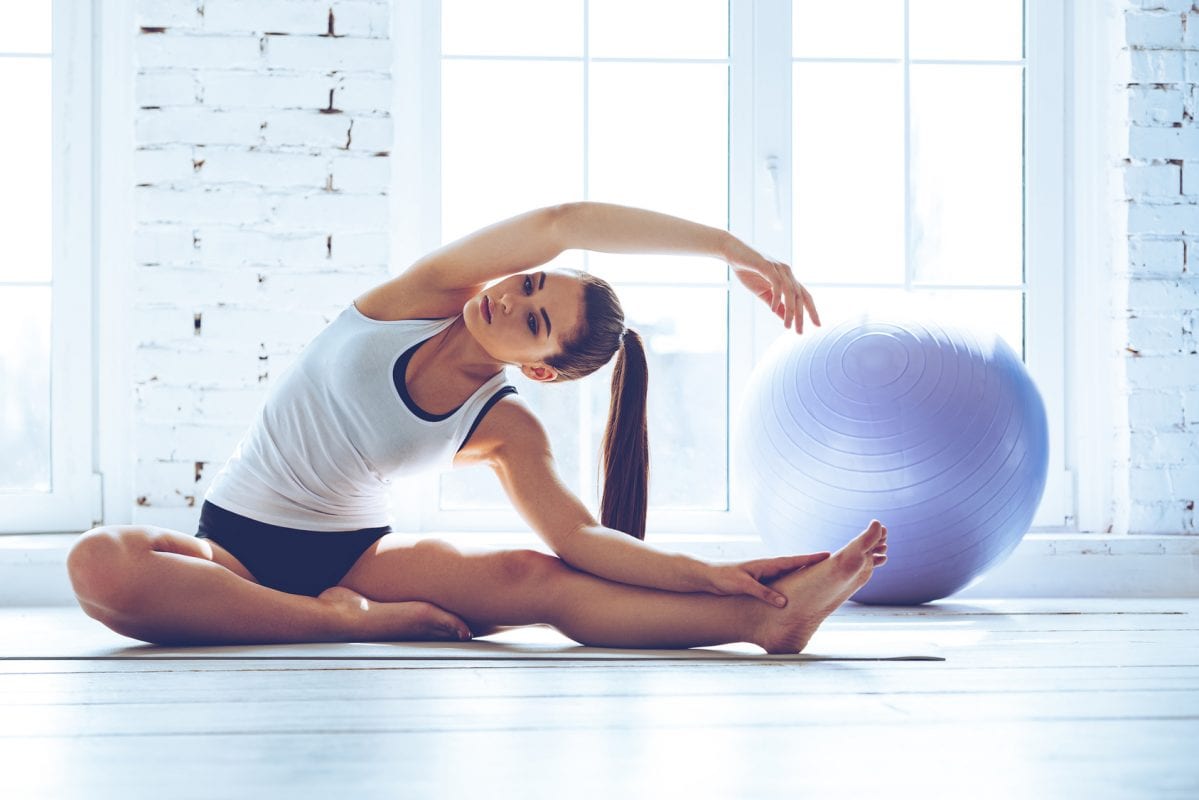For all of its physical benefits, it’s surprising how often the fitness community overlooks the importance of adequate flexibility. Whether going for a run, lifting up a box, or even just bending down to tie your laces, a lack of muscle elasticity could easily lead to a serious injury. Thankfully, limbering up your body does not require too much effort, and there are simple ways in which you can gradually flex your way to success. Here are 10 to get you started:
1. Warming Up
People tend to jump straight into intense stretching when they want to increase their flexibility, but this can have negative repercussions. Excessive stretching can tear the calf muscle especially without an insufficient warm-up session, and you may throw your back out too if you’re not properly prepared. All it takes is 20 minutes of moderate cardio to get that blood flowing and muscles warmed up, which you can even achieve simply by enthusiastically cleaning your house.
2. Stretching
Undeniably the most popular method of improving elasticity is to stretch out those muscles, loosening them up like a rubber band. Especially if you work at a desk all day, taking a break every hour to extend those limbs can make a huge difference in your overall wellbeing. Stretching should also be performed before and after any physical activity to avoid stiffness or injury.
3. Yoga
Yoga deserves its reputation as one of the fastest ways to improve your flexibility, while allowing you to easily measure your progress based on which poses have become available to you. What’s more, these disciplines will strengthen your core, reduce mental stress, train your balance, and help you maintain a healthy weight. Many people prefer to practice yoga at home, but group classes do offer additional social benefits.
4. Pilates
For those who crave something a little more intense than yoga, then Pilates may be what you’re looking for. By mixing up your movements with an occasional weight or resistance band thrown in, you’ll quickly learn which muscle groups are best used for what activity. Pilates is also renowned for improving your posture and firing up that core.
5. Martial Arts
Martial arts have the specific advantage where one learns how to push their flexibility to the very limit while keeping every movement under strict control. There will always be higher places to kick and further punches to reach, which introduces your muscles’ resilience into real life practices. Tai chi is often noted for its relaxed approach towards a free-flowing flexibility and a strong posture.
6. Dancing
If all else fails, why not dance your way to elasticity? Whether cleaning up your house or walking to the shop, you can easily implement a few dance moves to activate almost all of your muscle groups throughout the day. Not only will it make your life more fun, but it’s also an acquired skill which you can show off at weekend parties. For bonus points, join a class!
7. Diet
Ways of improving your flexibility are not limited to physical movement, and there are food angles to consider too. Vitamin C encourages a speedy recovery (oranges, strawberries, peppers), omega-3 assists easier joint movements and contain anti-inflammatory properties (soy, nuts, avocados), protein promotes muscle building (eggs, oats, broccoli), and you can boost your circulation with turmeric or ginger. Sufficient hydration is also essential in maintaining a lubrication within your motions.
8. Massaging
As if you need another excuse to enjoy a deep muscle massage, this procedure is perfect for locating any areas of tightness and working out tension. You can achieve similar results at home by using a foam roller, but nothing will hit the spot quite like a professional masseuse. The harder, the better!
9. Hot Tub
A lengthy soak in the hot tub is not only a valuable break for your mental health but is also the perfect approach to release tension from your muscles. Furthermore, your blood circulation will increase in the heat which will assist the restoration process and relax any aches you may be currently experiencing. You can even perform your stretches under the warm water for additional improvements.
10. Acupuncture
Any health enhancements attributed to acupuncture have long been debated by the science community. However, with such an interesting history behind it, there are many people who live by this traditional Chinese method for pain relief and increased blood flow. If you’re open to alternatives, then there is no harm in giving this a try.








